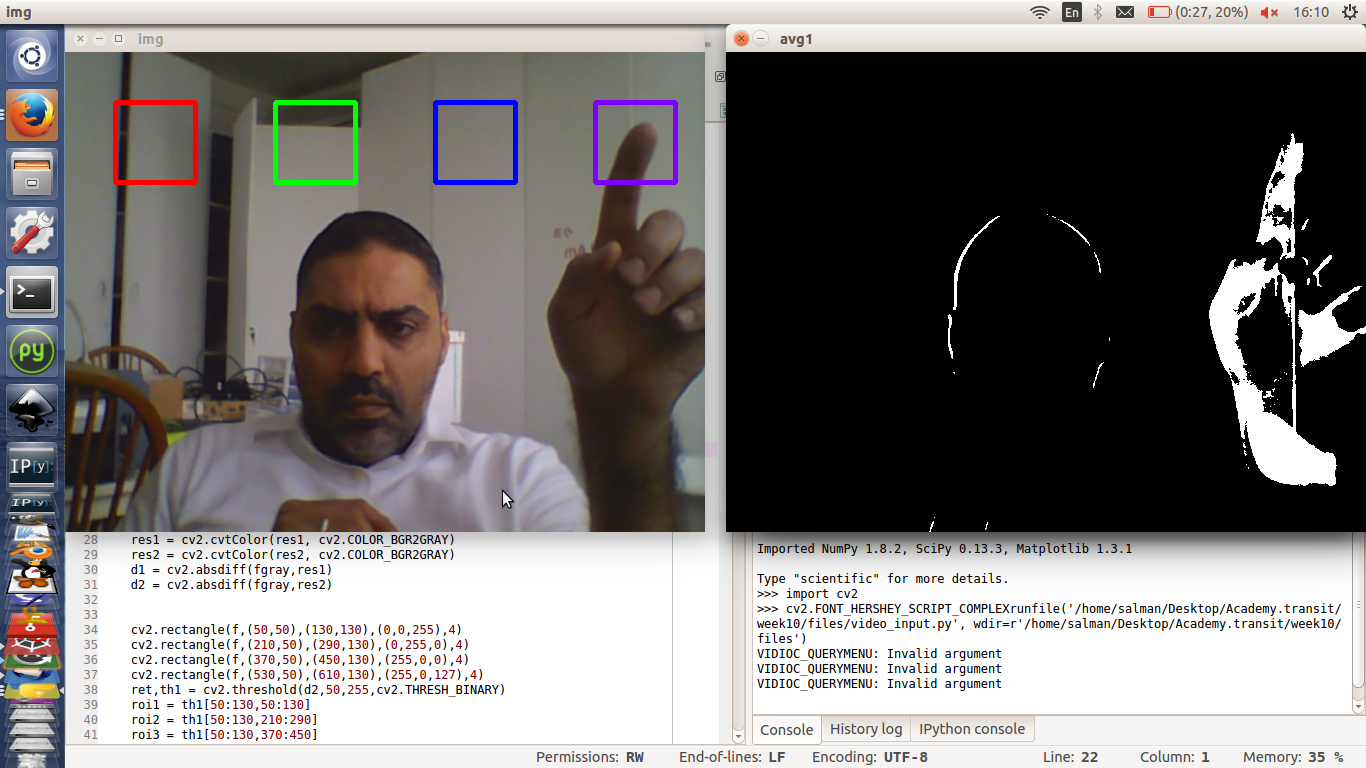Week15 : Interface and application programming
I tested several methods of creating an interface and an application, I decided to chose the input device photocell idea in week 10 as my sample case to build an application. I have tried few of the programming mentioned here before. for the sake of testing as many languages as possible i decided to go with an Arduino board as base to test all the different Ideas, the board is programmed with Firmata Standard, I think it also helped me focus on understanding how the lanugauges interacted with a serial port and a microcontroller.
Processing for visualizing results
I like the look and feel of Processing visualization, and it's ease of use. The IDE is related to Arduino and the amount of online resources is amazing. First attempt was to test a simple code that would simulated the change of brightness on the photocell. I chose a 3D render in processing with a simple sphere in a scene with a directional light and the specular value of the sphere is changing according to the voltage change in the photocell or in other words the resistance.
Change in brightness will result in change in resistance and it's seen in the above video as each sphere is becoming bright as a response to the photocell. 3D render is used and a specular is changed based on the voltage read by each sensor respectively.
Light direction is seen as a trail moving from one photocell to the other in the above video
VTK as another useful visualization tool
I got familiar with vtk during my masters, it is heavely used in medical image visualization with another very powerful toolkit called itk, python and to be more specific iPython helped me get easily familiarized with vtk. Most of my final work was written in c++ but python being a scripting language helped me understand what is happening under the hood.
I wanted to use vtk as my visualization tool for the final project, and trying to have all the necessary tools and libraries in one programming environment would make things much easier.
Python brings us together
Python has vtk bindings, opencv, pyserial and to make things more interesting there is even a pyProcessing package or a python mode in Processing. I think I don't need to look further.
How to set up your python development environment?
Adding a module to python is as simple as
1- download module source
2- extract
3- In source root directory and from command line execute python setup.py install
-In a python console if import (module name) without errors a good chance is your installation worked.
In many cases I need to know the type and number of argument a function would take. I found
OpenCv video for interactive


for the same input device I created in week10 I added the following lines in the python code :
import time
from pyfirmata import Arduino, util
board = Arduino('/dev/ttyACM0')
it = util.Iterator(board)
it.start()
digital_6 = board.get_pin('d:6:o')
digital_5 = board.get_pin('d:5:o')
digital_4 = board.get_pin('d:4:o')
digital_3 = board.get_pin('d:3:o')
and in the if statements in the code for the screen region of interest that functioned as an interface I added those lines to simply flicker an led once the area of the screen is touched.
digital_6.write(1)
digital_6.write(0)